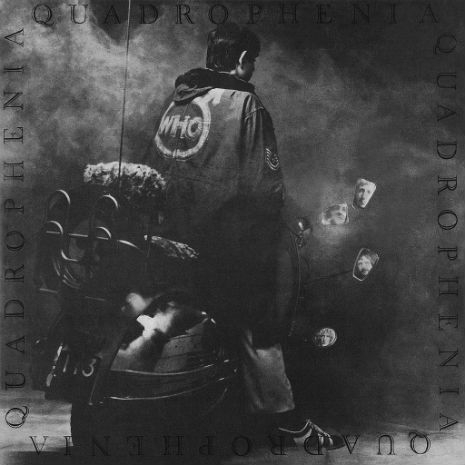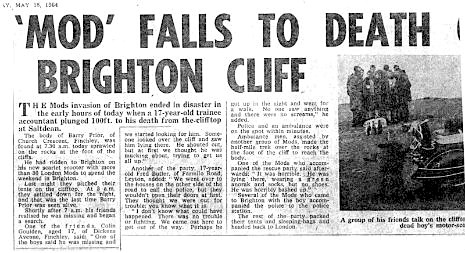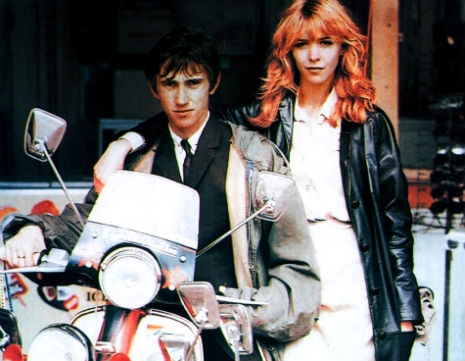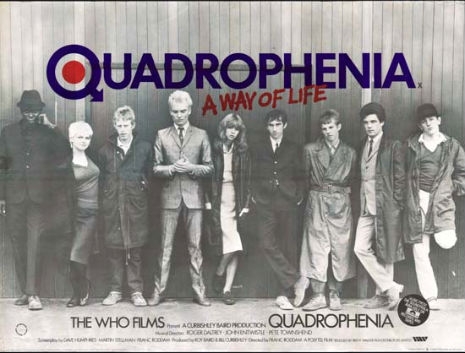
In the climactic scenes of the film Quadrophenia, based on The Who’s concept album, Jimmy (Phil Daniels) rides a prized Mod scooter along the cliffs at Beachy Head, East Sussex, before hurling it over the cliff on to the sea-lashed rocks below. It’s a symbolic end to Jimmy’s life as a Mod, as a follower believing in false idols, like his hero Ace Face (Sting) (whose scooter he stole), a local Mod leader, who turns out be nothing more than a bell-boy lackey. Jimmy’s fall is central to the film, and to Pete Townhend’s album. But Jimmy’s symbolic crash may have actually been inspired by the death of Mod teenager, Barry Prior in 1964.
Novelist, journalist and musician, Simon Wells believes he has uncovered the lost Mod who may have inspired Townshend’s Quadrophenia. Wells is the author of such best-selling biographies as Coming Down Fast on Charles Manson; Butterfly on a Wheel: The Great Rolling Stones Drugs Bust, The Beatles 365 Days, and a novel Tripping Horse. He has just finished a book on the making of the film Quadrophenia, which will be released next month. In 2009, Wells uncovered a news-clipping about Barry Prior’s death, which started his investigations into the story.
In the spring of 1964, a 17- year-old trainee accountant by the name of Barry Prior fell to his death at [Saltdean]. He’d been down to Brighton with a group of friends from London, to engage in what history now defines as the “Mods and Rockers” riots of the early 1960s. Whether by design or through an act of eerie synchronicity, Barry’s journey is echoed by the album and attendant film version of Quadrophenia, Pete Townshend’s classic paean to teenage angst. The fact that the concept’s protagonist, a similarly aged office worker from London, met his “demise” on a Brighton cliff top haunts me. As far as I’m concerned, these similarities are just far too extraordinary to be an act of coincidence.

Wells uncovered a local newspaper report of the accident, which detailed what had happened to Prior.
I pull out a photocopy of a news feature concerning Barry’s death that I uncovered quite by accident a while back. It’s from the Brighton Evening Argus, a provincial daily newspaper that’s as much a fixture of the town as the promenade and pier. Next to the headline, “Mod Falls to Death at Brighton Cliff”, there’s a photograph of Barry’s scooter and a group of sullen youngsters in a huddle around the cliff edge.
As one would expect from a local newspaper, it’s pretty stilted in its reporting of the drama. Additionally, as the Argus is a daily issue, the feature was probably thrown together in order to meet the noonday deadline. The article informs me that following an eventful day in Brighton, this group of thrill seeking Mods arrived at Saltdean around 3am.
What happened in the ensuing hours is a mystery. All that is known is that Barry’s body was discovered shortly after 7am, lying sprawled some 100 feet below on the beach. Colin Goulden, one of Barry’s circle recalled the moment when they discovered that Barry wasn’t where he should be.
“One of the boys said he was missing and we started looking for him,” said a stunned Goulden.
“Someone looked over the cliff and saw him lying there. He shouted out, but at first we thought he was mucking about, trying to get us all up.”
Fred Butler, another friend from London could hardly bring himself to look at Barry’s scooter as reporters pressed him for an explanation:
“I don’t know what could have happened. There was no trouble or fighting. We came out here to get out of the way. Perhaps he got up in the night and went for a walk. No one saw anything and there were no screams.”
Trying to make some sense of this, my immediate thought is that in his bleary state, Barry may well have gone for a pee or some other ablution, misjudged his footing and headed off into the unknown. Presumably, the fence is a recent addition; had it been in place back in 1964 history might well have been different. I gingerly venture forwards and peer over the cliff. It’s absolutely terrifying and offers no respite in its descent to the ground. Barry wouldn’t have stood a chance.

Barry’s friends went for help, but after the events in Brighton between Mods and Rockers earlier in the day, no one would answer their doors, as one friend explained to the paper:
“We went over to the houses on the other side of the road to call the police,” recalled one of the lads. “But they wouldn’t open their doors at first. They thought we were out for trouble: you know what it is.”
Emergency services eventually arrived, who then had to make a 1600 foot detour along the cliff to reach Barry’s body on the shore below.
One of youths, either too shaken or terrified to give his name to the Argus, recalled the grisly scene when they approached Barry’s body.
“It was horrible,” he said. “He was lying there wearing a green anorak and socks but no shoes. He was horribly bashed up.”
The article concludes that after Barry’s body was taken away by ambulance to hospital, the police took a few of the Mods back to Brighton to fill out witness statements. Following the completion of the necessary paperwork, they were allowed to leave. It must have been a pitiful and sombre retreat back to London, with the impending horror of having to recount Barry’s death to his family weighing heavily on their minds.

Brighton was a focus for the Mods during the early 1960s, where they famously gathered to face-up to rival Rockers. The town was also a favorite haunt for The Who, performing extensively here in 1964 at the Florida Rooms.
The place obviously found favour with Pete Townshend, who dedicated Quadrophenia‘s album to those lucky few who attended those Florida Rooms gigs. When pressed on this, Townshend has recalled a seismic event that occurred in his consciousness one blisteringly hot summer night in August 1964. Following a typically frantic Who performance, Pete left the sunken reaches of the venue and perched himself on the promenade to wind down. As he meditated on the sea while having a relaxing smoke, the last few stragglers from the concert made their way up the marble steps to street level. As the faintly metronomic sound of the tide morphed with the strains of Tamla Motown seeping out of the Ballroom, it made for an enchanting aural concoction. As if on cue, a few hardy Mods stepped into their scooters, and drove around in a circular formation before moving off into the darkness. As these disparate elements gradually merged into a moving motion picture, Townshend was entranced. To him it was the “most perfect moment of my life”, a confirmation of the sort of landscape that had played in his head, but rarely in reality. Elements of this scene are echoed in the film of Quadrophenia, where a group of scooter riders similarly engage in an automated circle dance at first light. As I piece the images together at the same location, it strikes me that this particular experience defined Townshend’s vision for Quadrophenia more than any other factor.
A coroner’s inquest concluded a verdict of “death by misadventure.” But the story doesn’t finish there, as Simon Wells discovered that Barry’s brother was later employed by The Who, which makes it more than likely that Pete Townshend had heard of Barry Prior’s ill-fated trip to Brighton and tragic death long before he wrote Quadrophenia.
Read Simon Wells original article here, details of his forthcoming book Quadrophenia: The Book of the Film here.
Previously on Dangerous Minds
The Rolling Stones great drugs bust